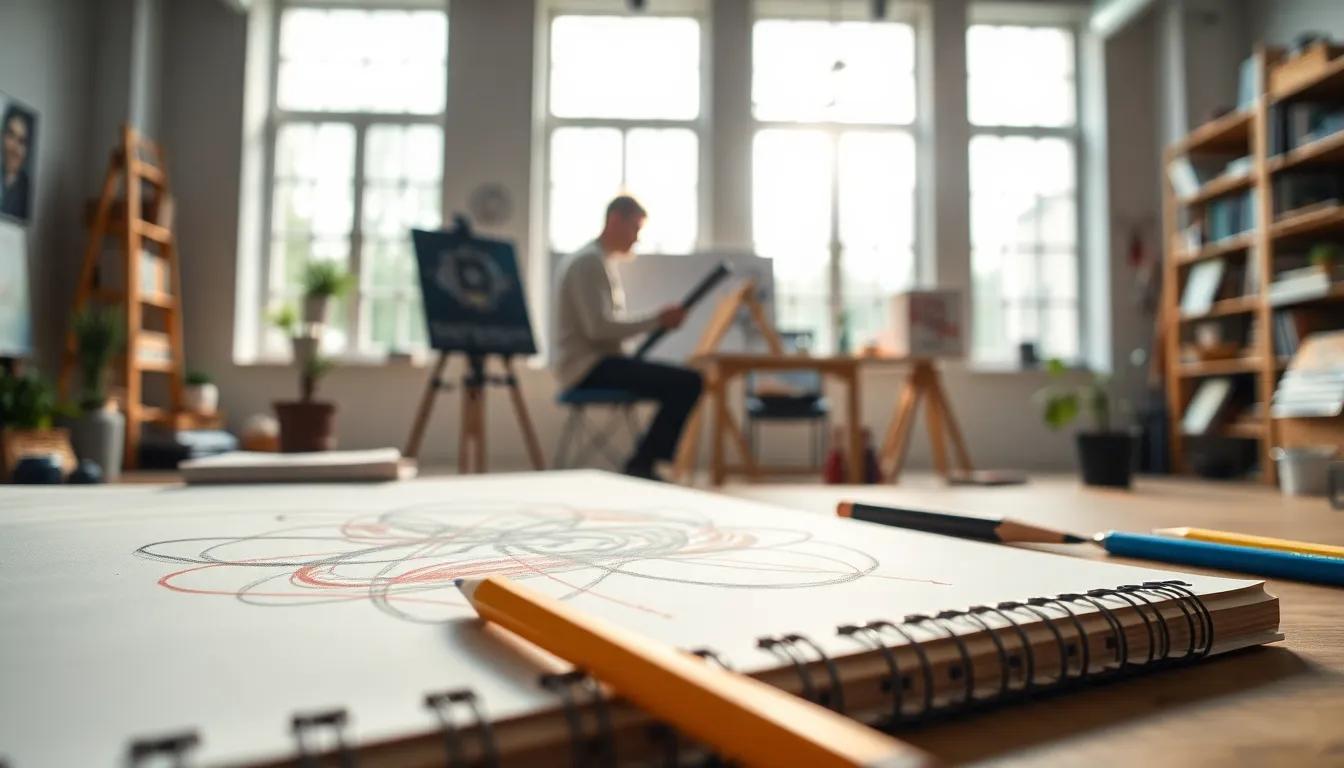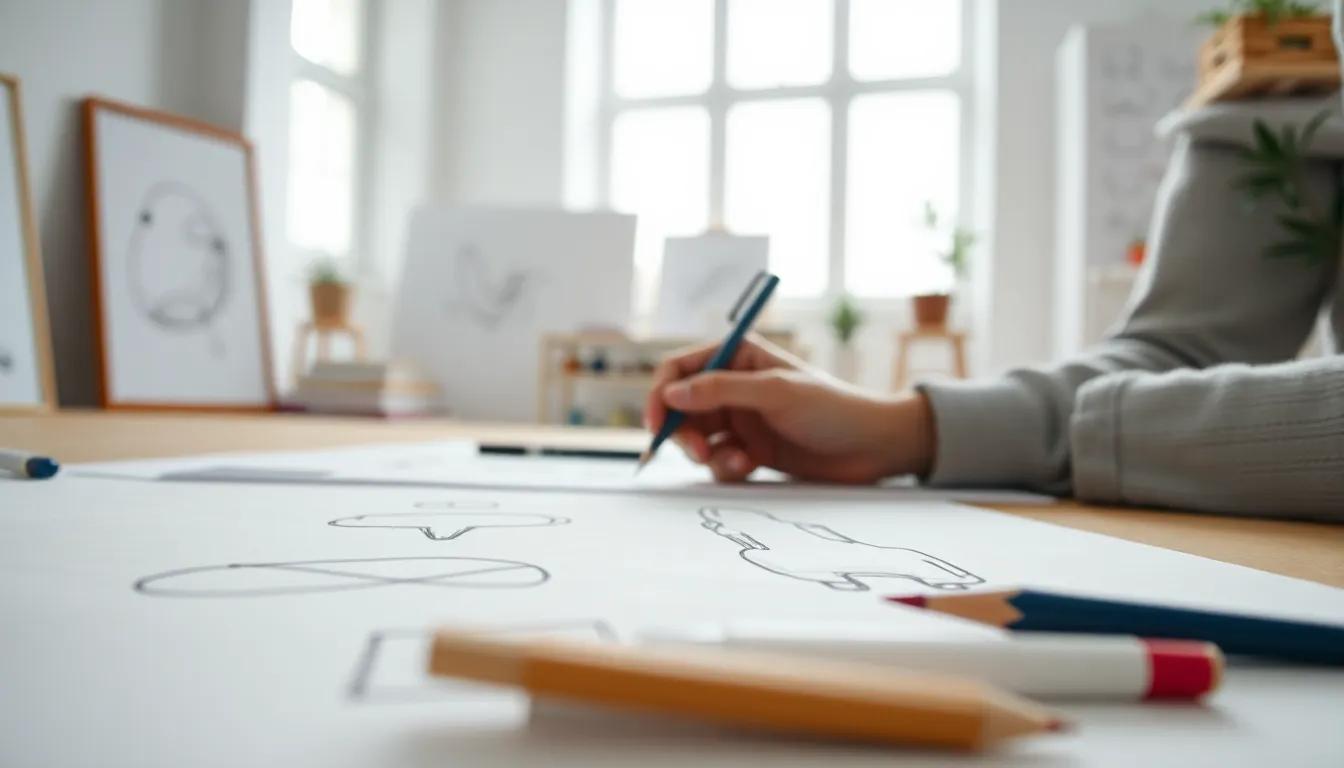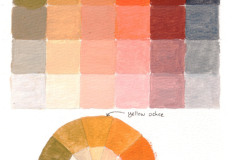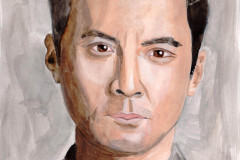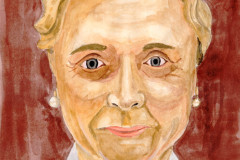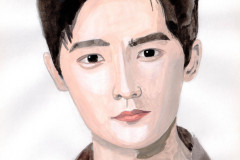Introduction
Engaging in drawing can be a delightful way to express creativity and relieve stress. Whether you’re a seasoned artist or a beginner just picking up a pencil, discovering easy things to draw can inspire you to create daily. From simple shapes to whimsical characters, the possibilities are endless. In this article, we unlock a variety of fun and easy drawing ideas that can be done almost anywhere and at any time, encouraging you to embrace your artistic side.
Everyday art isn’t just limited to intricate designs; it encompasses quick sketches that capture the beauty of the mundane. By focusing on accessible drawing concepts, you can develop your skills while having fun. This exploration into everyday doodles will provide you with both techniques and inspiration to enhance your art journey. Let’s dive deep into the realm of easy yet captivating things to draw that will bring joy to your creative process.
The Joy of Sketching Basic Shapes
Understanding the Foundations of Art
Basic shapes form the bedrock of all drawings, acting as vital building blocks from which more intricate designs emerge. Whether it’s the circle of a sun, the straight lines of a house, or the triangle that shapes a mountain, these simple forms are the starting points for nearly every artwork. Recognizing the significance of basic shapes will elevate your sketching skills and allow you to approach more complex compositions with ease.
Circles, squares, and triangles each bring unique qualities to the table. Circles represent softness and flow—think of a balloon or a friendly cartoon character’s head. Squares imply stability and strength, found in structures like buildings or signage. Triangles convey direction and action, reminiscent of mountain peaks or arrows pointing the way. Understanding how to manipulate these shapes will not only enhance your ability to sketch but also improve your overall artistic intuition.
Practicing Basic Shapes
Embarking on the journey of mastering these fundamental shapes requires practice and patience. Begin with circles: place your pencil down and attempt to draw circles of varying sizes. Don’t be disheartened if they’re not perfect; the goal is to develop your hand-eye coordination. Repeating this exercise will lead to smoother, more controlled circles over time.
Once you’re comfortable with circles, transition to squares. Draw squares in different orientations and sizes. Empower your creativity by experimenting with squared-off corners and rounded edges. This can help you find your own style while mastering the basic shape itself.
Practice triangles. Experiment with equilateral, isosceles, and scalene triangles. You can even merge them with circles and squares to create more complex designs or patterns. The versatility of triangles can lead you to explore dynamic compositions and imaginative layouts.
To keep your practice sessions enjoyable, consider incorporating them into your daily art routine. Set aside a few minutes every day to doodle shapes while listening to music or a podcast. Not only will this make the practice enjoyable, but it will also engrain these shapes into your muscle memory, setting the stage for crafting elaborate artworks with confidence and flair.
Whimsical Characters and Creatures Fun and Easy Inspirations for Everyday Art
Embracing Imagination in Your Sketches
Creating characters and creatures is a delightful way to bring your sketches to life. Whether it’s a cartoon animal with exaggerated features or an imaginary creature that steps out of your wildest dreams, these whimsical sketches can transform your art into a playful narrative. Drawing these characters doesn’t have to be complicated; instead, focus on simplifying shapes and incorporating unique, fun elements to express personality and charm.
Start by observing the world around you. Everyday life is rich with inspiration. Take your pet’s quirks or the unique way your friends laugh, and translate that into a character design. You can give a cat big, oversized glasses to enhance its wisdom, or dress a dog in a suit and tie to highlight its serious demeanor. From frowning frogs to cheerful birds, your possibilities are endless. Allowing your imagination to influence your sketches brings an element of joy, making the process not just about art, but also about storytelling.
Simple Steps to Create Your Characters
To make the drawing process easy and fun, begin with basic shapes. Start with simple circles and ovals for heads and bodies; then, add triangles for ears or noses. Think of each section of your character as a puzzle piece waiting to fit together. Once you have your forms down, use creative contrasts. A chunky bear might have tiny legs, or a long-necked giraffe could have a tiny head adorned with a huge flower. Such playful proportions spark laughter and create a quirky appeal that invites viewers into your imaginative world.
Infuse personality into your characters through facial expressions and accessories. A wide smile can evoke friendliness, while arched eyebrows can create an aura of mischief. Adding hats, glasses, or quirky outfits further enhances your character’s identity. Accessories can change the entire mood of your sketches, turning a meek character into a bold adventurer or an elegant princess.
Practice is key to evolving your style. Don’t hesitate to experiment with colors, patterns, and textures. Use a vivid color palette to breathe life into your creatures and characters, allowing the joyful energy of your imagination to shine through your artistic expressions. Through simple and fun sketches, you can create a magical world filled with delightful characters that resonate with your personal artistic voice.
Nature Around Us Easy Drawing of Natural Elements
Sketching Simplified Natural Objects
Nature is a magnificent source of inspiration for everyday art, offering countless opportunities for creativity. When you think of drawing elements of nature, it can be easy to feel overwhelmed by the complexity of trees, flowers, and landscapes. However, the beauty of sketching lies in your ability to simplify these objects into manageable forms. The key is to focus on the core shapes and outlines of what you see, translating the intricate details into basic geometrical figures.
Start with trees, which can be broken down into simple shapes. Instead of attempting to sketch every leaf and branch, consider drawing a basic trunk and a cloud-like top for the foliage. You might begin with a straight or slightly curved line for the trunk, then add an oval or rounded shape for the canopy. From there, create variations by adding texture with short strokes to represent bark or layering different sizes of ovals for a more dynamic look. The beauty here lies in abstraction; convey the essence of a tree without getting lost in the minutiae.
Similarly, flowers can be transformed into delightful drawings by reducing them to fundamental parts. Examine their shapes: petals can be depicted with simple curved lines radiating from a central point. Consider using circles or ovals for the center of the flower and varying the sizes of the petals for a more natural appearance. Play with different angles and overlaps to create a sense of depth. To add an artistic touch, explore a loose, sketchy style, giving your flowers a whimsical quality that reflects their vibrant spirit.
As you venture into landscapes, start by identifying the horizon line. Draw this line gently across your page, establishing where land meets sky. Use basic shapes for hills and mountains—triangles and curves work beautifully here. Add simple clouds with soft, fluffy lines and keep the foreground uncomplicated by sketching elements like rocks or bushes using rounded forms. Integrating a few stick figures or simple animals can bring life to your drawing, making it a whimsical scene rather than a stark representation of nature.
Nature art can be both enjoyable and relaxing, serving as an effortless way to practice your drawing skills. As you develop your abilities, experiment with different styles and techniques, refining your unique perspective on the natural world around you.
Everyday Objects as Art The Beauty of Daily Life
Finding Inspiration in Common Items
Everyday objects surround us, often overlooked yet brimming with potential for artistic expression. From coffee cups to sneakers, these items can transform into fascinating subjects for drawing. The beauty lies in their simplicity and the stories they carry. When you take a moment to scrutinize the forms, textures, and colors of these objects, you can find a wealth of inspiration that can invigorate your sketching routine.
Consider a coffee cup, for instance. Its curves and patterns present an array of shapes, from the rounded rim to the tapered base. As you look closer, you may notice reflections and nuances in color that create an engaging play of light and shadows. Practicing how to portray this humble vessel can enhance your skills in rendering three-dimensional forms. Start by breaking it down into basic shapes; from there, build the details gradually. Drawing such material not only hones your technical ability but also deepens your appreciation for the items you use daily.
Shoes are another delightful subject. Whether they are old and worn or stylish and new, each pair has a character of its own. You can capture the intricacies of their design—the laces, the curves, and even the textures of the materials. Shoes often symbolize journeys and experiences, adding a narrative layer to your sketches. Creating a series of shoe drawings could tell a visual story of your day-to-day life, thereby intertwining art with personal history.
Consider food items around your kitchen or a beautifully arranged table. A piece of fruit or a baked good can become a vibrant composition rich in color and form. Drawing food not only serves as a creative outlet but can also be a captivating way to study color blending and shading techniques. Take a fruit bowl and depict its contours and the subtle variations in hue—this can transform a simple bowl of apples into an enchanting work of art.
Turning the Mundane into the Extraordinary
The goal is not to create masterpieces but to find joy in the process. By sketching everyday objects, you cultivate a habit of noticing the small details that often go unnoticed. Let your sketchbook be a canvas filled with the stories of your routine, where each object encapsulates moments of daily life. This practice not only enhances your artistic skills but also invites creativity to flourish amid the familiar. So grab your pencil and start discovering the extraordinary within the ordinary.
Creating Scenes from Imagination Unleashing Creativity in Your Drawings
Visual Storytelling Beyond Realism
Drawing scenes from your imagination offers a unique avenue for artistic expression where creativity reigns supreme over realism. This process invites you to remove the constraints of the physical world and dive into realms governed solely by your thoughts and feelings. Whether it’s a fantastical city in the clouds, a whimsical forest filled with curious creatures, or an alien landscape on a distant planet, the only limit is your imagination.
The initial step in creating scenes from imagination involves brainstorming ideas. You might find it helpful to keep a sketchbook handy to jot down thoughts, dreams, or snippets from stories you’ve read. Rather than focusing on perfecting a certain image, let the flow of inspiration guide you. Doodling random elements can often spark new ideas that lead to more coherent scenes.
Once you have an idea, begin sketching various components that will populate your scene. This could involve a playful mix of characters, objects, and settings. For example, if you envision a lively market, think about the vendors, their colorful wares, and the vibrant reactions of customers. This breaks down what could seem like a colossal task into smaller, manageable parts.
As you sketch, prioritize the emotional tone over a realistic portrayal. By focusing on how you want the viewer to feel—whether it’s joy, wonder, or even nostalgia—you can infuse your drawing with a sense of life and dynamism. Experiment with proportion, perspective, and colors. If a giant mushroom feels right in your enchanted forest, allow it to grow larger than life!
Another exciting aspect of creating imaginary scenes is the ability to blend various styles and techniques. Incorporate elements of abstract art, cartoon characteristics, or even surrealism to amplify the atmosphere of your work. This inclusive approach nurtures your artistic voice, allowing it to resonate profoundly with your intended audience.
Bringing It All Together
Once the primary components are in place, focus on the composition. Consider how the placement of each element influences the flow of the scene. Use lines and shapes to guide the viewer’s eyes through your artwork, creating pathways that evoke movement and curiosity. Connect your elements with creative lines or imaginative details that make the scene feel cohesive. By approaching sketching from an imaginative standpoint, you transform simple drawings into vibrant stories, forged from the enchanting depths of your mind.
Incorporating Patterns and Textures for Everyday Art
Enhancing Your Drawings with Simple Designs
One of the most enjoyable aspects of drawing is the ability to personalize and elevate your artwork with patterns and textures. These elements can add depth and dimension, transforming a basic sketch into something captivating. Whether you’re doodling on the back of a notebook or creating a full-fledged piece of art, incorporating patterns and textures can make the process both fun and enriching.
Patterns can range from simple lines and dots to more intricate designs like spirals and florals. To start, consider the surface of your drawing. If you are sketching a landscape, adding a repeating pattern to the sky can introduce an uplifting rhythm. For instance, simple lines radiating from a sun can create rays of light, while swirls can represent clouds rolling in. It may seem basic, but these patterns draw the viewer’s eye and can evoke emotions tied to nature.
Textures, on the other hand, allow you to simulate the surface qualities of objects. When drawing a tree, adding cross-hatching or stippling can convey the roughness of the bark. For water, wavy lines can indicate movement, while tiny dots or dashes might suggest the play of light on the surface. Practicing these techniques can greatly improve your ability to convey different materials in a drawing, adding both realism and artistic flair.
A useful exercise is to create a texture booklet. Use a blank sketchbook to experiment with different textures: create sections for rough, smooth, bumpy, and soft materials. Draw samples of how these textures might look on various objects like fruit, fabric, or metal. This will not only inspire your future art projects but also help you become more comfortable incorporating these elements into your work.
Combining patterns and textures can create a rich tapestry in your artwork. For example, you may choose to fill a flower’s petals with delicate patterns while using a textured approach for the leaves and background. This interplay engages the viewer and fosters a sense of depth, making your drawings more visually interesting.
As you continue to sketch and explore, remember to enjoy the process of layering patterns and textures. The simple act of adding these details can invigorate your artistic practice, bringing fresh perspectives to your everyday drawings. Embrace the challenge of experimenting, and you’ll discover new ways to express your creativity.
Sharing Your Art with Others The Joy of Connection
Why Sharing is Important
Sharing your artwork can be an incredibly rewarding experience. It serves not only as a means of self-expression but also promotes connection with others who share similar interests. When you share your creations, whether on social media or in more personal settings like drawing groups, you open the door for dialogue, feedback, and encouragement. This communal aspect can reignite your passion for drawing and inspire fresh ideas. Artwork has the power to transcend words, enabling you to communicate feelings and thoughts that may be difficult to articulate. Each piece shared can evoke a sense of emotion, sparking discussions or even motivating someone else to create.
Ways to Share Your Art
There are numerous avenues for sharing your artwork. Social media platforms such as Instagram, Pinterest, and Facebook provide a broad audience to showcase your pieces. You can create an online portfolio or use hashtags relevant to your art style, allowing your work to be discovered by others who appreciate similar themes. Participating in drawing groups or art communities can also be beneficial. These spaces often allow for constructive feedback and collaboration, helping you to grow both as an artist and an individual.
Don’t underestimate the power of sharing with friends and family. Hosting a small gathering or inviting loved ones to your workspace can create an informal but meaningful atmosphere where you can reveal your artwork. Sharing your pieces with those closest to you may feel less intimidating and can serve as a boost of confidence.
Benefits of Community Engagement
Engaging with others who appreciate art can foster a supportive atmosphere. You will likely find that the more you share, the more others will reciprocate, creating an enriching cycle of inspiration. Over time, this connection not only enhances your artistic skills but also broadens your perspective on creativity. As you share, you might also receive input on how to incorporate different styles or techniques, enhancing your art’s depth and richness.
In a world where art can sometimes feel solitary, sharing allows for a collaborative spirit. Embrace opportunities to showcase your work, engage with others, and celebrate not just your creations, but the act of creation itself. Whether it’s through social media, local groups, or personal connections, sharing your art nurtures not only your skills but also valuable relationships.
Conclusions
The journey through the world of drawing reveals that art can be both simple and profound. By embracing easy things to draw, individuals can unlock creative potential that is both relaxing and rewarding. Many of the ideas discussed encourage practice and experimentation, reinforcing the idea that art is about exploration rather than perfection.
Incorporating these fun and easy drawing concepts into your routine can transform the way you perceive art in everyday life. Whether you sketch at home, while commuting, or during your free time, these inspirations can help you celebrate creativity. So pick up that pencil and let your imagination flow – you’ll be surprised at where it takes you!



